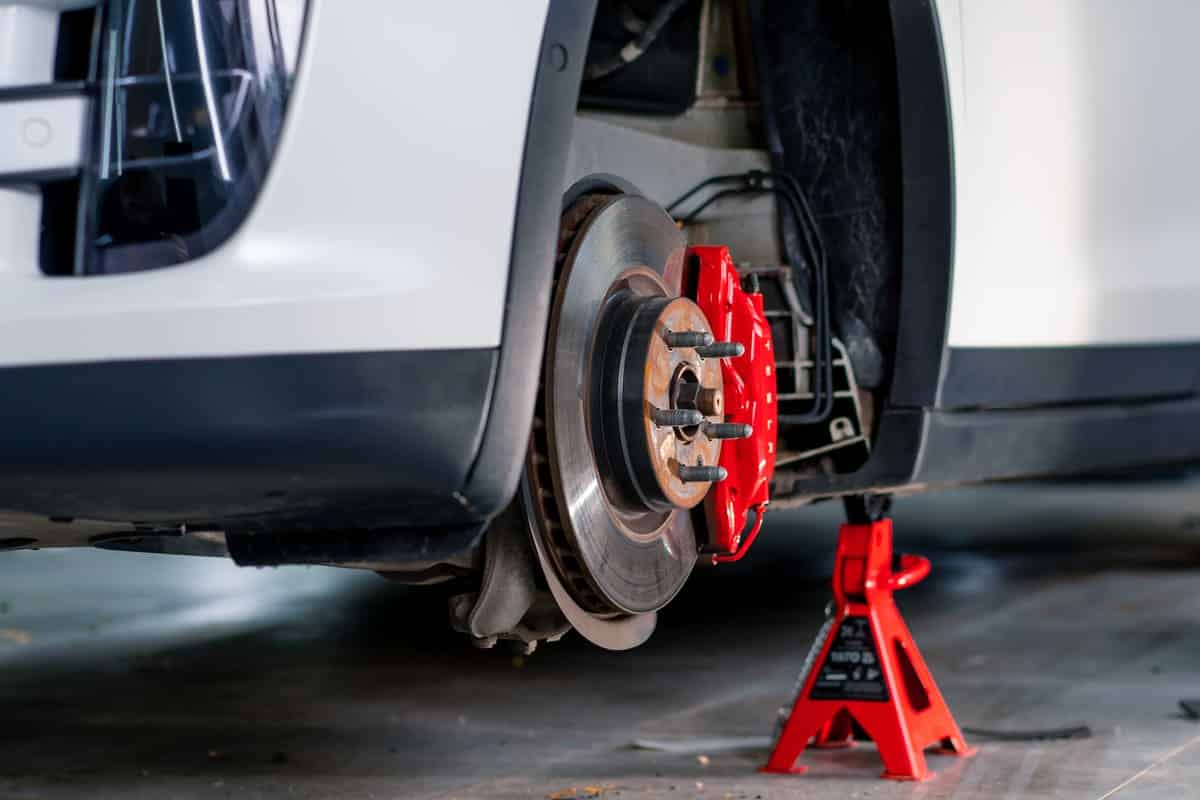Disc brakes convert kinetic energy into thermal energy through friction. Known for their reliability and efficiency disc brakes are the key to safe and controlled stopping.
What is a Disc Brake?
A disc brake is a type of brake that uses discs to stop a vehicle. When you press the brake pedal it activates the brake pads. These pads then squeeze against a rotating metal disc called a rotor which slows down the .
Disc brakes are found in cars and bikes because they stop better than many other brake types. They work in all weather conditions from rain to snow so you are safe.
The main components are the rotor, caliper and brake pads. The caliper pushes the pads against the rotor creating friction and stops the wheel. Simple and effective that’s why disc brakes is good for everyday use.
References
- Disc Brake. Retrieved from https://en.wikipedia.org/wiki/Disc_brake#
- Cambridge Dictionary: Disc Brake. Retrieved from
- ScienceDirect: Disk Brake. Retrieved from
What is the History of Disc Brake?
Disc brakes has been around for a long time. Engineers first experimented with them in the 1890s. Frederick William Lanchester a British engineer created one of the first practical disc brake in 1902.
The early design didn’t become popular until after World War II. In 1949 the Crosley Hot Shot an American was the first production car to use disc brakes. That was a big deal for the automotive industry.
In the 1950s Citroën a French car manufacturer used disc brakes on their Citroën DS. That was the proof that disc brakes works. Soon other carmakers followed.
Disc brakes became standard on many vehicles by 1970s. They are better and safer than drum brakes. Today almost all modern cars and bikes use disc brakes because they are reliable and efficient.
References
- Disc Brake: History. Retrieved from
How do disc brakes work?
Before we go into the working of disc brakes let’s know the main components of disc brakes:
Key Components:
- Brake Pedal: Activates the hydraulic system.
- Brake Lines: Carries the hydraulic fluid from the pedal to the caliper.
- Caliper: Houses the and brake pads and fits around the rotor.
- Piston: Moves within the caliper to push the brake pads against the rotor.
- Brake Pads: Creates friction against the rotor.
- Rotor: A metal disc attached to the wheel that slows down due to friction from the brake pads.
All these components work in sequence to stop your vehicle safely and efficiently.
Here’s how a disc brakes works:
Disc brakes stop your vehicle in a series of steps. Let’s break it down:
- Press the Brake Pedal: When you press the brake pedal it starts the process. This action sends the hydraulic fluid through the brake lines.
- Hydraulic Fluid Moves: The fluid travels through the brake lines to the brake caliper. The caliper is the component that wraps around the rotor.
- Piston Activation: Inside the caliper the hydraulic fluid pushes the piston. The piston moves outwards and press against the brake pads.
- Brake Pads Contact Rotor: The brake pads which are attached to the caliper then press against the spinning rotor. The rotor is a metal disc attached to the wheel.
- Create Friction: When the pads squeeze the rotor they create friction. This friction slows down the rotor and the wheel attached to it.
- Convert Energy: The friction converts the wheel’s kinetic energy into heat. The rotor dissipates this heat to prevent overheating.
- Release the Brake Pedal: When you release the brake pedal the hydraulic fluid goes back to its reservoir. This action pulls the brake pads away from the rotor and the wheel can spin freely again.
References
- Disc Brakes. Retrieved from
- How Disc Brakes Work. Retrieved from
- How Do Brake Discs Work. Retrieved from
How Many Different Types of Disc Brakes Are There?
Disc brakes come in several types each with its own features. Here are the main types:
Fixed Caliper Disc Brakes
Fixed caliper brakes have pistons on both sides of the rotor. They apply even pressure to the brake pads for better braking.
Floating Caliper
Floating caliper brakes have a single piston. The caliper moves sideways to press both pads against the rotor. These are simpler and lighter.
Ventilated Disc Brakes
Ventilated disc brakes have grooved or drilled rotors. These designs allow air to flow through and cool the brakes to prevent overheating.
Solid Disc Brakes
Solid disc brakes have plain rotors without grooves or holes. They are less efficient at cooling but simpler and cheaper to manufacture.
Slotted Disc Brakes
Slotted disc brakes have grooves cut into the rotor surface. These slots remove debris and gases to improve performance and reduce noise.
Drilled Disc Brakes
Drilled disc brakes have holes drilled into the rotor. This design helps to dissipate heat and water for better braking in wet conditions.
Each type of disc brake has its own purpose and advantages depending on the vehicle and driving conditions.
What are the Advantages of Using Disc Brakes?
Disc brakes have several advantages over other types of brakes. They are preferred for their effectiveness and reliability. Here are the main advantages:
- Better Stopping Power
- Improved Heat Dissipation
- Superior Performance in Wet Conditions
- Less Brake Fade
- Longer Lifespan
- Ease of Maintenance
These advantages make disc brakes a popular choice for many vehicles, enhancing both and performance.
References
- What is a Disc Brake. Retrieved from
- What is Disc Brake System. Retrieved from https://psbrake.com/blog/what-is-disc-brake-system
How to Maintain Your Vehicle Disc Brake?
Maintaining your vehicle’s disc brake is important for safety and performance. Follow these steps to keep them in good shape:
- Inspect Brake Pads Regularly
- Monitor Brake Fluid Levels
- Examine Rotors for Damage
- Clean the Brake Components
- Listen for Unusual Noises
- Check Brake Lines and Hoses
- Test Brakes Regularly
Proper maintenance keeps your disc brakes effective and extends their lifespan, ensuring safe driving conditions.


